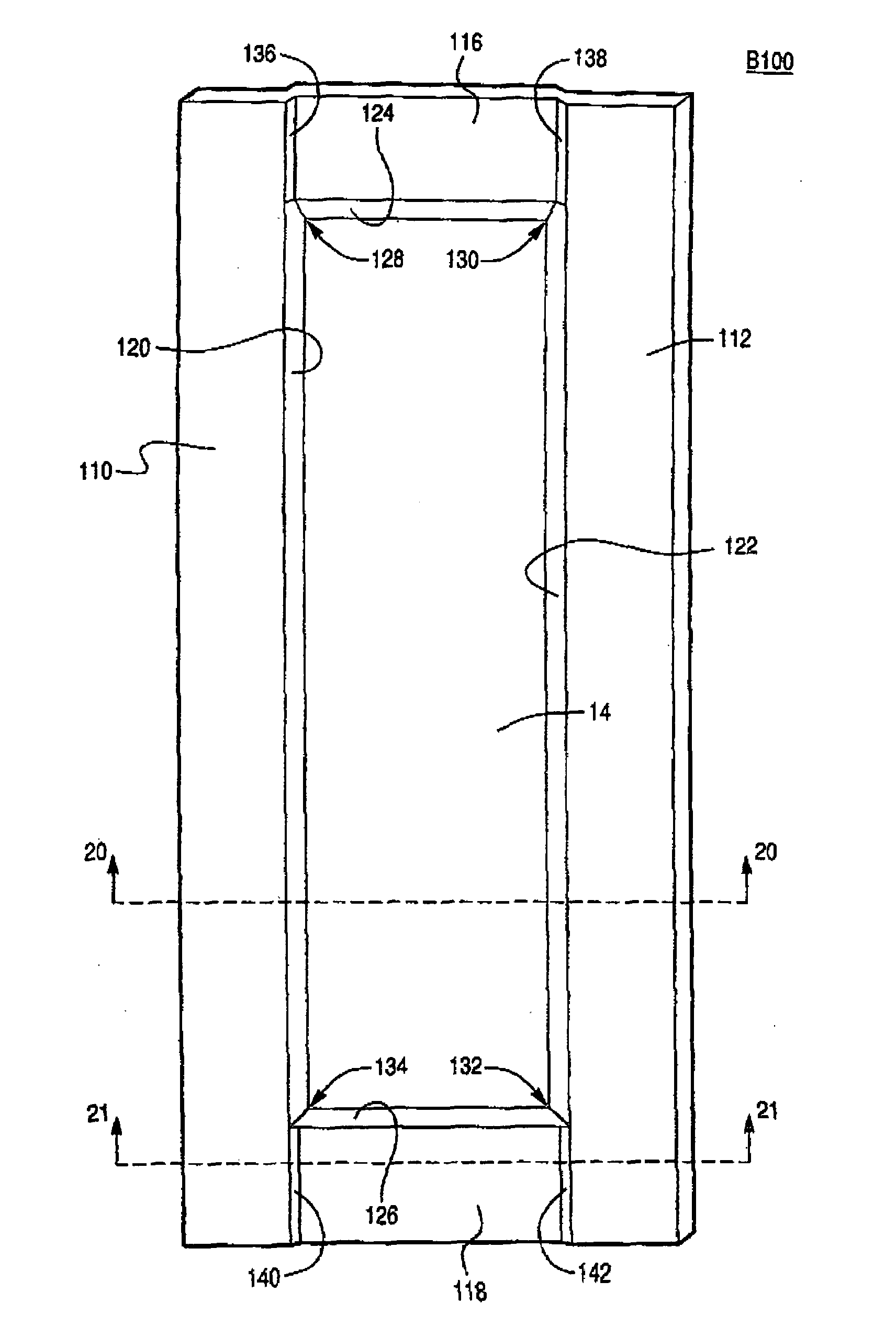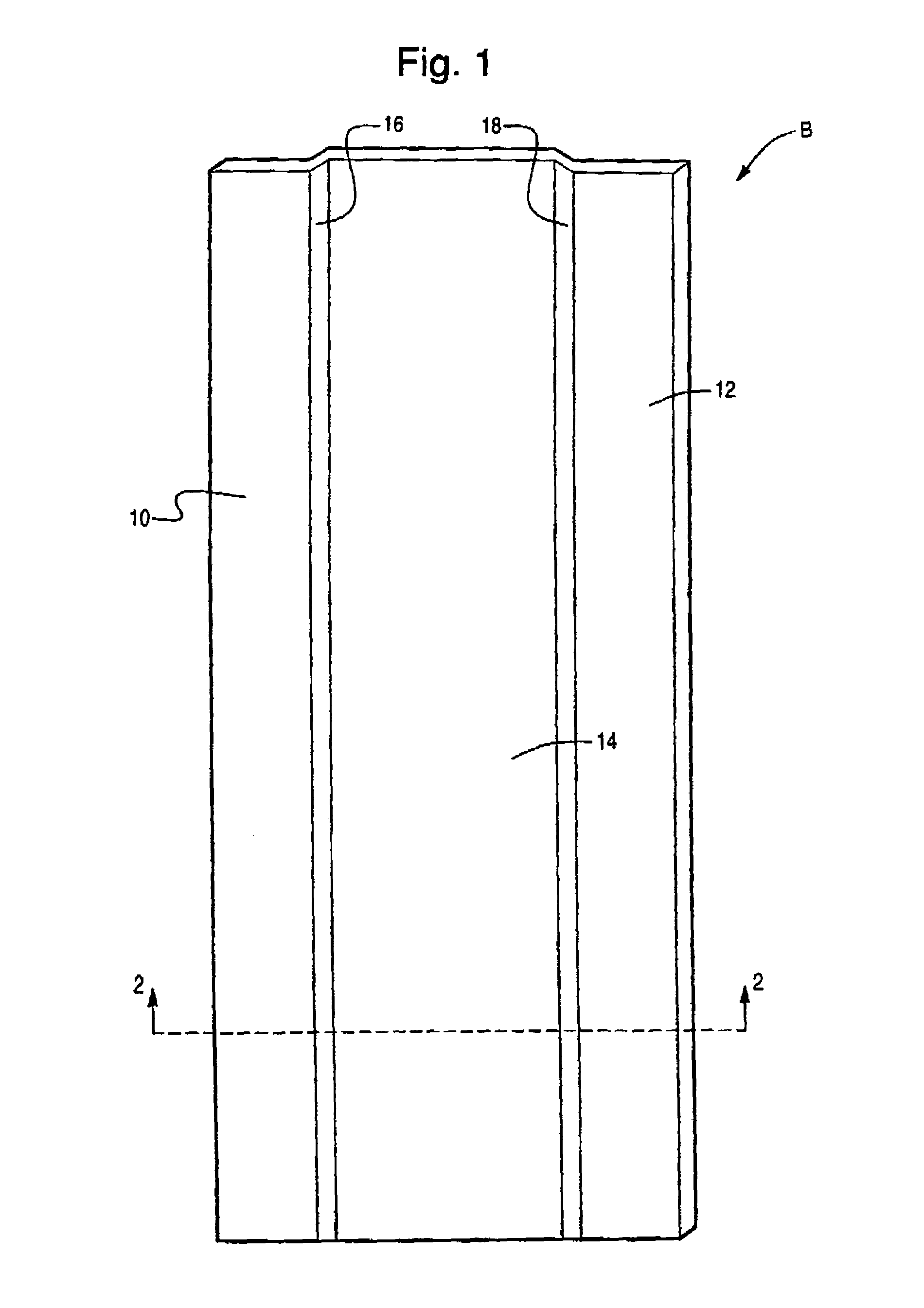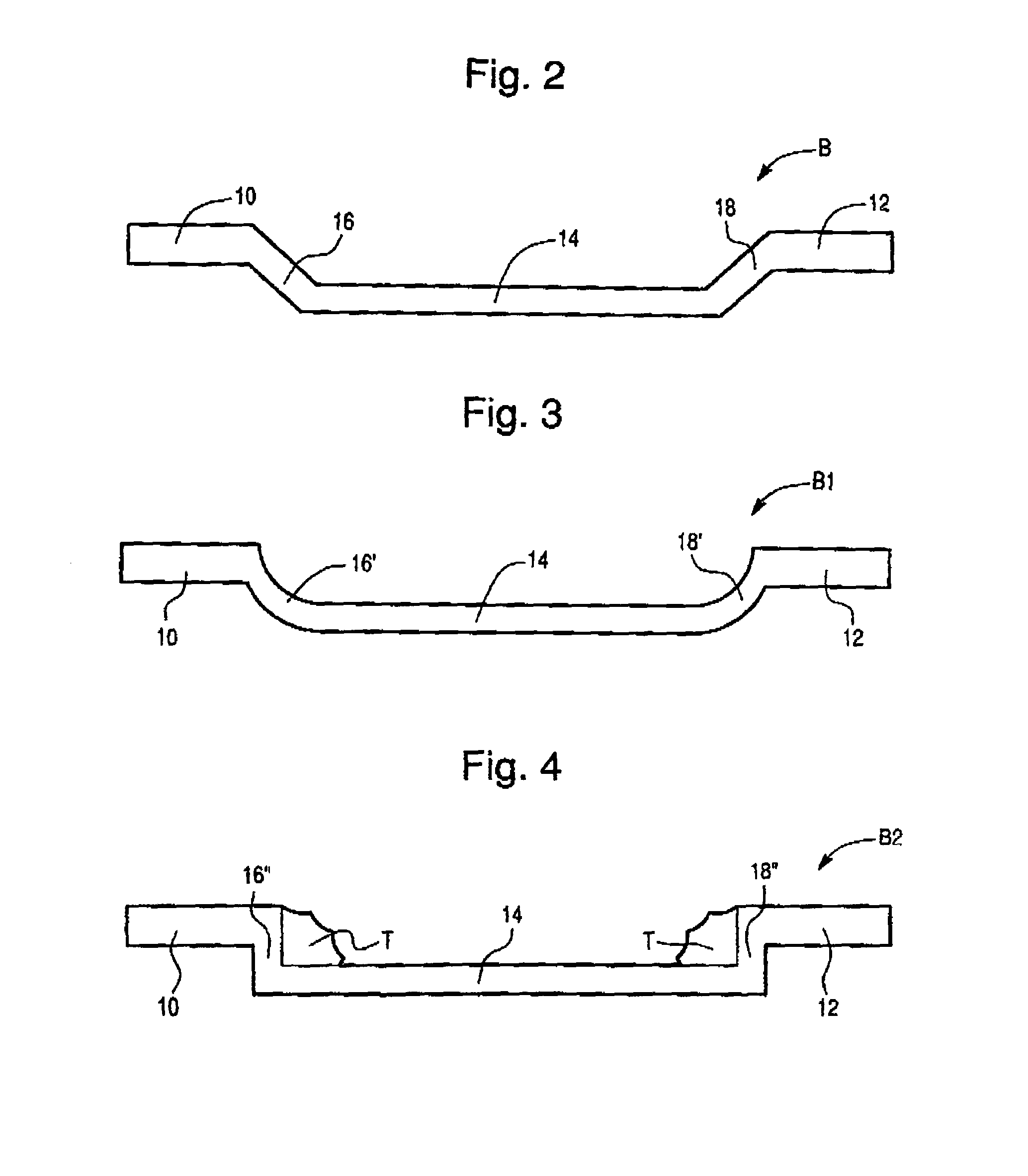Door skin, method of manufacturing a door produced therewith, and door produced therefrom
a door and skin technology, applied in the field of door skins, can solve the problems of increasing time and cost in door manufacture, affecting the appearance of separate stiles and rails, and requiring veneers and overlays
- Summary
- Abstract
- Description
- Claims
- Application Information
AI Technical Summary
Benefits of technology
Problems solved by technology
Method used
Image
Examples
Embodiment Construction
[0052]As best shown in FIGS. 1-2, a universal door skin blank B is formed to have oppositely disposed molded stiles 10, 12 lying on a first plane, and a flat planar portion 14 disposed between and integral with stiles 10, 12 and lying on a plane spaced from the plane of stiles 10, 12. Preferably, stiles 10, 12 are parallel and coplanar, and extend along the opposing sides of blank B. A standard width of stiles 10, 12 is about 152.4 millimeters (or about 6 inches). Planar portion 14 extends the entire length of stiles 10, 12, and maintains a substantially constant width between stiles 10, 12 the entire length of blank B.
[0053]Preferably, planar portion 14 is recessed relative to stiles 10, 12 by about 6 to 9 millimeters, though any desired spacing between the plane of stiles 10, 12 and the plane of planar portion 14 may be formed. Blank B may be post-formed from a solid composite wood blank, such as an MDF blank. Alternatively, blank B may be formed from a non-solid bat of material, ...
PUM
 Login to View More
Login to View More Abstract
Description
Claims
Application Information
 Login to View More
Login to View More - R&D
- Intellectual Property
- Life Sciences
- Materials
- Tech Scout
- Unparalleled Data Quality
- Higher Quality Content
- 60% Fewer Hallucinations
Browse by: Latest US Patents, China's latest patents, Technical Efficacy Thesaurus, Application Domain, Technology Topic, Popular Technical Reports.
© 2025 PatSnap. All rights reserved.Legal|Privacy policy|Modern Slavery Act Transparency Statement|Sitemap|About US| Contact US: help@patsnap.com



